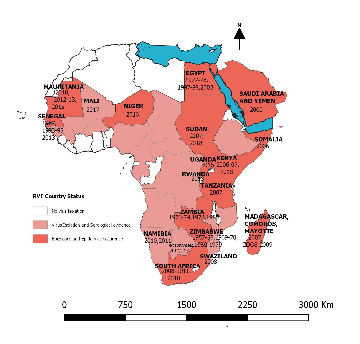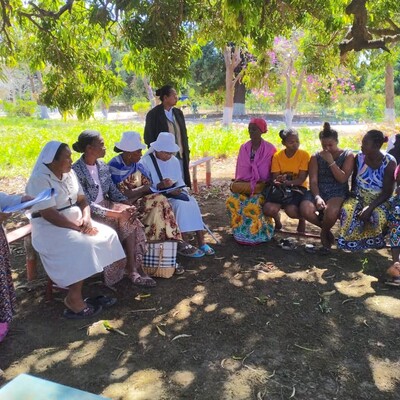
Minimizing the risks of Rift Valley fever in Uganda – BuildUganda project to build national surveillance and response capacities

Livestock waiting to drink at a traditional deep well source at Garba Tulla, Isolo, Kenya (Photo Credit: ILRI/Fiona Flintan)
Written by Ekta Patel and Kristina Roesel
In early June this year, the BuildUganda research for development project was launched at a workshop with stakeholders. One of the four components of the project is focused on controlling Rift Valley fever (RVF) in Uganda. During the workshop, component leaders shared their aims and plans for this component, soliciting feedback and guidance from stakeholders on its focus, deliverables, partnerships and field sites.
This component specifically aims to minimize the impacts of RVF by improving capacities for surveillance and response at national and community levels, leading to better risk prediction, evidence-based disease control policies, and improved awareness about the disease.
RVF is a viral disease of livestock that has the capacity to infect humans. It often spreads from animals (mostly cattle and sheep but also goats and camels) to humans through mosquitoes or through contact with infected tissues from the animals. In humans, it manifests as a mild flu-like disease or a severe haemorrhagic fever and even death. In infected livestock, it may also cause abortions and losses of young animals. The virus was first identified in 1931 on a farm in the Rift Valley of Kenya and since then outbreaks have been reported in many countries in sub-Saharan Africa and the Middle East (Figure 1).

Figure 1. Countries reporting RVF outbreaks in Africa and the Middle East (Source: https://hdl.handle.net/10568/102465)
Uganda reported its first outbreak in 2016 and the full impact of the disease in the country has not been quantified. Multiple outbreaks have been observed in the south-western parts of the country (Figure 2) but with changes in the climate, the geographical range of the disease is slowly expanding. However, the disease occurrence patterns is poorly understood, for example, it is not known how the virus is sustained between outbreaks. The relative effectiveness of the available control measures such as livestock vaccination is also not fully determined.

Figure 2. Districts reporting RVF outbreaks in Uganda (Source: https://hdl.handle.net/10568/99146).
This component of the BuildUganda project aims to contribute to government national action planning by developing an RVF risk map, providing recommendations on control options, and refining the existing training and communication tools. These joint efforts aim to minimize the impacts of RVF by improving capacity for surveillance and response at national and community levels through better risk prediction, evidence-based disease control policies and improved awareness about the disease in the communities.
Participants at the June 2019 launch workshop suggested that the project should review ways of synergizing interventions developed by the Ministry of Health with those of the Ministry of Agriculture (i.e. vaccination of animals to contain human disease outbreaks) as well as bridging knowledge gaps. They also proposed that it should build capacity among the staff involved in these interventions e.g. the district entomologists who would be able to monitor seasonal changes in the populations of mosquito involved in the disease transmission. Such information would be useful for guiding targeted vaccination programs.
Cristian Raileanu, a researcher at the Friedrich Loeffler Institute (FLI), the German Federal Research Institute for Animal Health, says ‘Uganda lacks information on mosquito species and there are over 50 different species that can transmit the disease. Bridging the knowledge gaps and mapping of mosquitoes would help to understand disease transmissions.’
Working with Uganda’s district entomologists, the Freie Universität Berlin and FLI will collect mosquitoes, breed and characterize them to understand the local population of the mosquitoes. All the data analyzed will help to finalize a risk and vulnerability map that could form the basis for future risk-based vaccinations, surveillance programs and a synergistic response plan in the country. The next steps for RVF in 2019 include training of district entomologists in collecting and identifying mosquito species, finalize the RVF risk map for Uganda, develop contingency planning for outbreak investigation.
BuildUganda is a research for development collaboration to prevent and tackle animal diseases and zoonoses in Uganda. Led by ILRI and MAAIF, it mobilizes national and international research and development partners from Uganda, Kenya and Germany. The five-year program is funded by the Federal Ministry for Economic Corporation and Development (BMZ) and the CGIAR research programs on Livestock and on Agriculture for Nutrition and Health (A4NH).
For more information, contact Kristina Roesel, program coordinator, k.roesel@cgiar.org
Additional information:





















